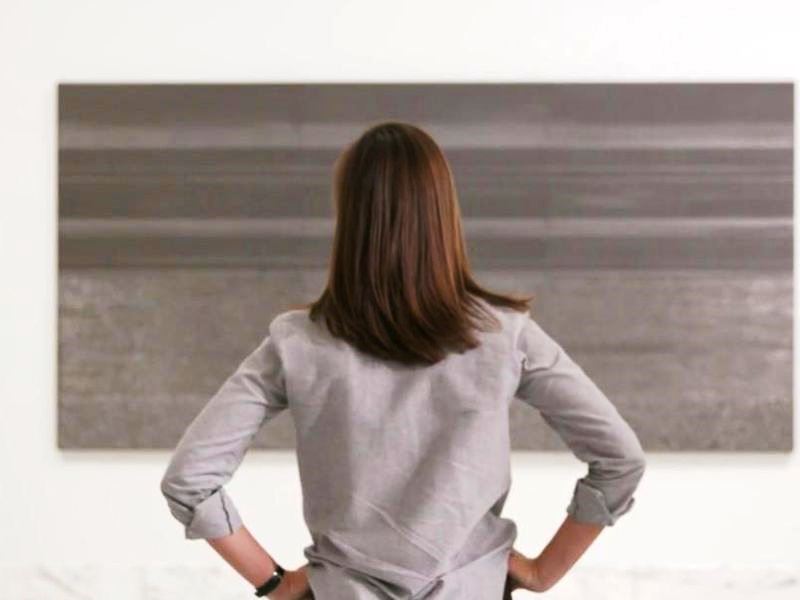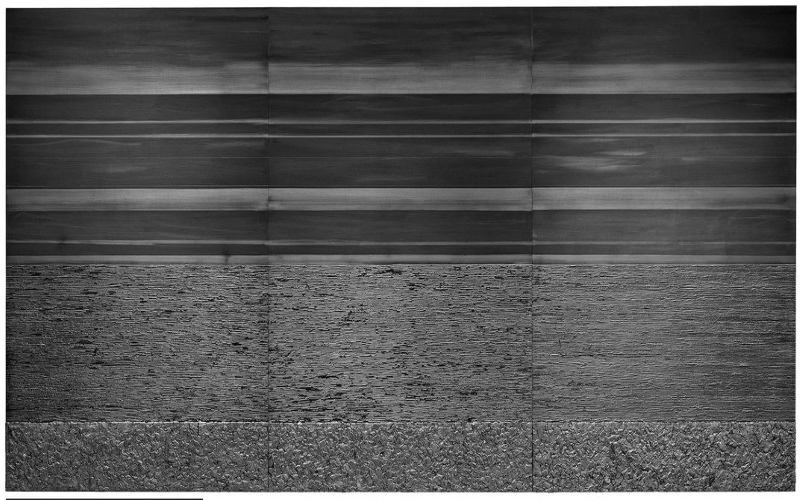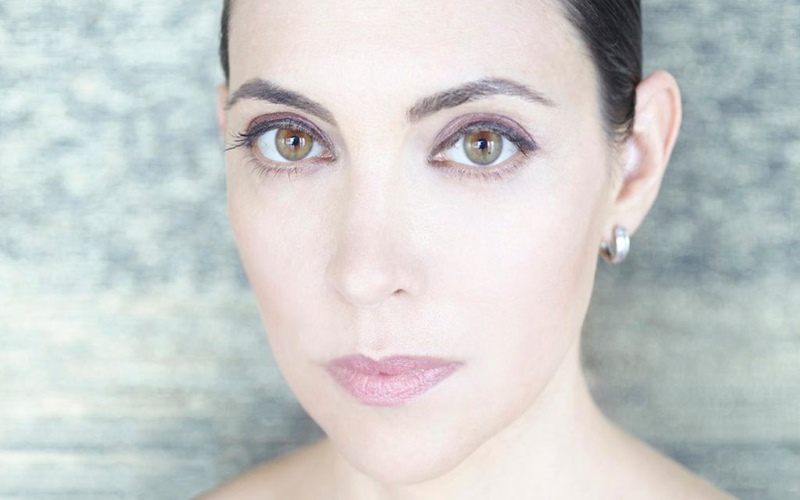A new episode of the Smithsonian’s ‘Re:Frame,’ explores the origin of graphite, a material artists have used for centuries

From a distance, contemporary artist Teresita Fernández’s sculpture Nocturnal (Horizon Line) appears to be a simple, modern rectangle of silvery gray. In the artist’s words, “when approached directly, you see nothing, just a simple dark gray rectangle. But when you start moving, the pieces become animated. . . . It’s almost as if the image develops before your eyes.”
Gradations of color and texture emerge, forming three distinct horizontal bands. The first, smooth and flat, evokes the sky. The second, shiny and polished, nods to water. The third, chunky and organic, represents the Earth.
The differences in consistency are made possible by Fernández’s use of graphite, a mineral formed over thousands of years under the Earth’s surface. A new episode of “Re:Frame,” a video web series produced by the Smithsonian American Art Museum, investigates the compelling role graphite has played in the history of art—and in Fernández’s work.
“Teresita Fernández is a researcher in many ways and she’s also a conceptual artist,” says E. Carmen Ramos, curator of Latino art and the museum’s deputy chief curator.
Born in Miami in 1968, Fernández received her BA from Florida International University and an MFA from Virginia Commonwealth University. In 2005, she was awarded a MacArthur “Genius” grant and, in 2012, President Obama appointed her to the U.S. Commission of Fine Arts. Her sculptures and installations can be found in museums throughout the world, including the Smithsonian American Art Museum.
Fernández’s work focuses on the natural world, which she explores using unconventional methods and materials. “She’s created images of cloud formations, volcanic eruptions and bodies of water,” says Ramos. “In many cases, she uses a wide variety of materials to create these illusions that become experiences for the viewer.” To create Nocturnal (Horizon Line), the artist investigated the material properties of an unexpected substance: graphite.

“Graphite is a naturally-occurring mineral. It occurs all over planet Earth, and in space, and it’s formed just of the element carbon,” says Liz Cottrell, curator-in-charge of rocks and ores at the Smithsonian’s National Museum of Natural History in Washington, D.C.
“Humans, animals and plants are composed of carbon. We, humans, are carbon-dominated lifeforms, and when we die, our bodies and tissues decompose, and under heat and pressure in the Earth, organic carbon turns into graphite,” says Cottrell.
Though often mistaken for lead, the workhorse material at the end of our pencils is actually graphite. According to Cottrell, “graphite is super soft, and that’s because the carbon atoms are arranged in plains, in sheets, and those sheets simply sluff off when you rub it.”
Graphite has been a popular art-making material since the 16th century. It was a favorite of Renaissance master Leonard da Vinci, who used graphite to create some of the earliest “landscapes” in Western art history.
Prior to da Vinci’s time, artists considered nature a backdrop—not a subject—for artwork. Da Vinci was among the first to create drawings that foregrounded nature, celebrating the landscape rather than human civilization. “There is this deep connection with graphite, which is related to pencils and the depiction of landscapes,” says Ramos.
“One of the most popular graphite localities historically is in England. . . where pencils were first developed,” says Cottrell. Borrowdale, in the Cumbria region, became particularly famous among Renaissance artists for its high-quality deposits. Even before da Vinci began drawing with Cumbrian graphite, English shepherds used it to identify their flocks by marking the wool of their sheep.
The development of landscape as an artistic focus, and its connection to the material graphite, served as the inspiration for Nocturnal (Horizon Line). As an artist whose work centers on the natural world, Fernandez was drawn to the physical location—and material—that inspired the genre she continues to explore.

Follow us: @SmithsonianMag on Twitter
While da Vinci sketched with a graphite pencil, Fernández sculpts with graphite itself. “She was really intrigued with this idea of creating a picture whose material is intimately and completely integrated with the image that she’s creating,” says Ramos.
But Fernández is not depicting Borrowdale in Nocturnal (Horizon Line)—or any specific landscape.
“When you think about historic landscapes from the 19th century by Thomas Moran and Frederic Church, they represent very specific places, right? Whether it’s the Chasm of Colorado or the Aurora Borealis,” says Ramos. “When you look at this work, it has a kind of generic feel.”
“Teresita Fernández is not interested in depicting a specific place, but is really interested in triggering our personal associations, a visitor’s personal association, with a place of their own choosing,” Ramos says.
Grounded in centuries of art history and millennia of geological processes, Teresita Fernández’s sculpture Nocturnal (Horizon Line) is ultimately about personal experience—it’s the stuff of stardust evoking memories. Her use of graphite connects the sculpture to the land, but its lack of specificity allows viewers to project their own setting, either imagined or remembered, onto its shimmery surface.
“Whenever I look at it, I think of when I lived in Chicago and all of my walks looking at Lake Michigan. It has that experience for me. While it’s not depicting Lake Michigan, it triggers that memory in my personal history,” says Ramos.
Teresita Fernández’ 2010 Nocturnal (Horizon Line) is on view on the third floor, east wing of the Smithsonian American Art Museum in Washington, D.C.